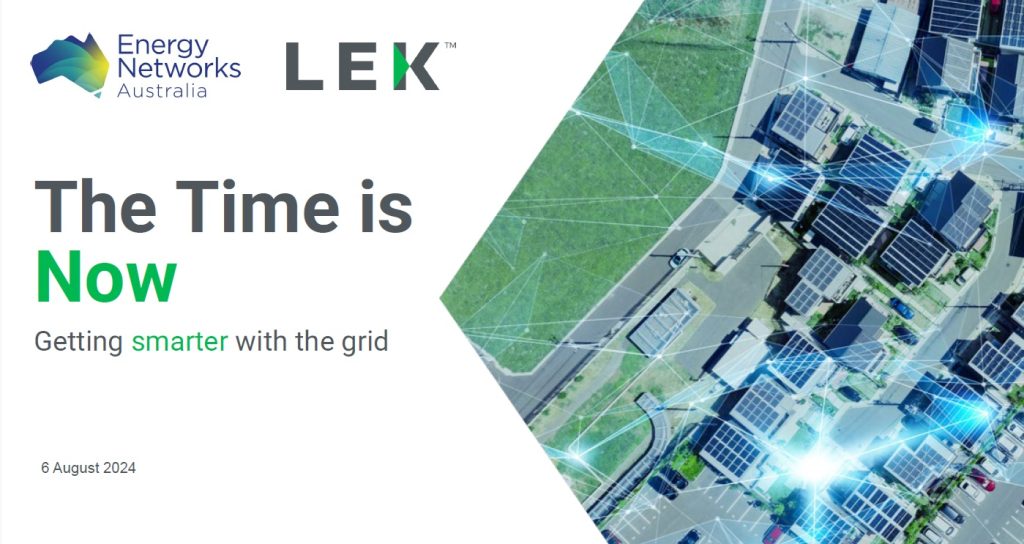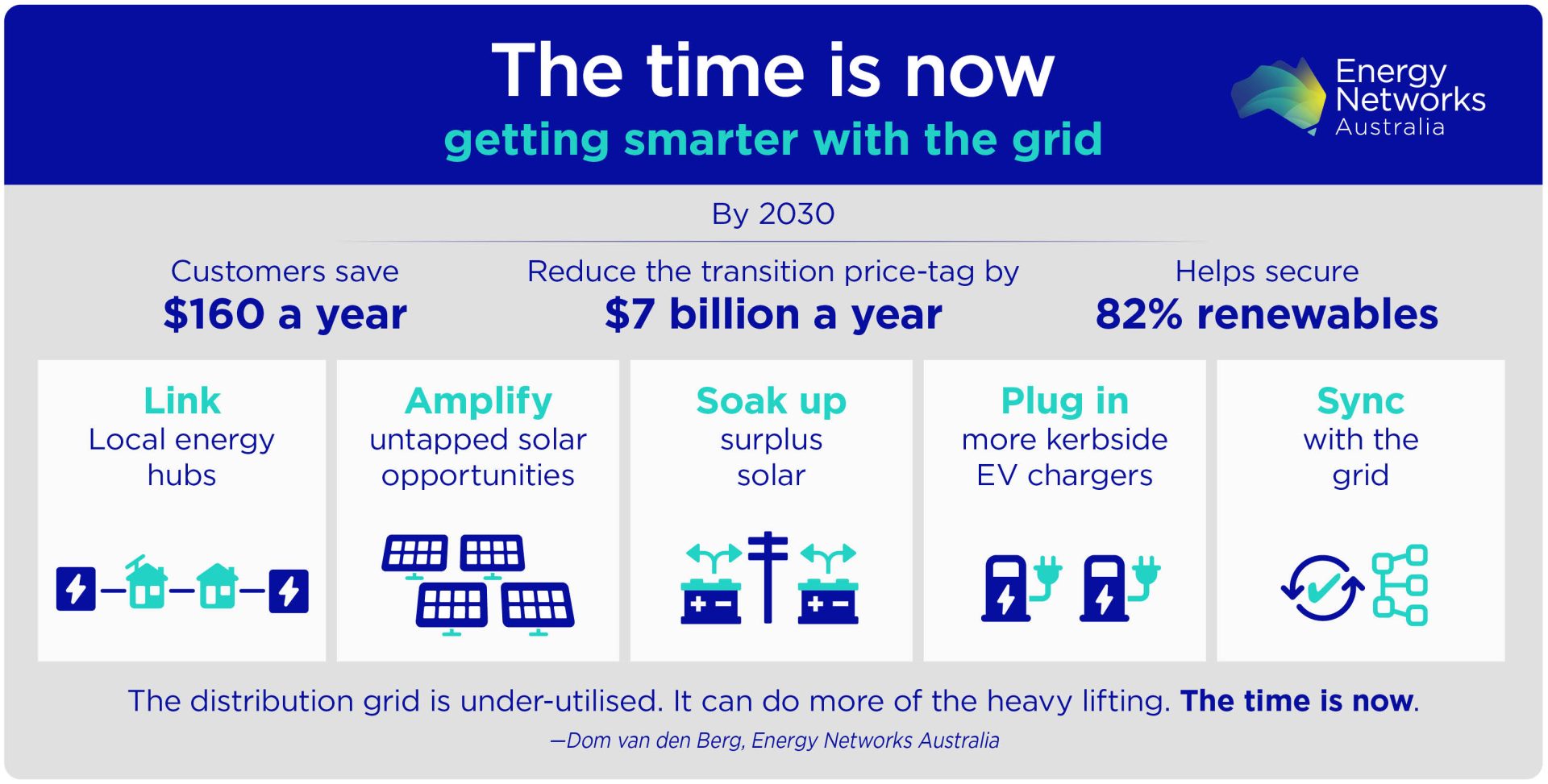The time is now: Getting smarter with the grid
 Energy Networks Australia (ENA) worked with L.E.K. Consulting to model the levers that could be pulled within the distribution grid to support the decarbonisation of the electricity system and provide cleaner and cheaper energy solutions for all customers. The Time is Now report shows that the local grid is under-utilised and can do more ‘heavy lifting’.
Energy Networks Australia (ENA) worked with L.E.K. Consulting to model the levers that could be pulled within the distribution grid to support the decarbonisation of the electricity system and provide cleaner and cheaper energy solutions for all customers. The Time is Now report shows that the local grid is under-utilised and can do more ‘heavy lifting’.
Australia is already working hard to deliver the large-scale renewable generation projects and transmission infrastructure that we need to transform the grid. This report shows that there are more levers we can and should pull now at a local level to help secure our renewable energy targets and reduce bills for customers.
L.E.K.‘s ‘whole of energy’ system modelling shows that we have a window of opportunity now to empower distribution networks to take on more of the heavy lifting in the energy transition. By implementing the changes recommended in this report, customers could save around $160 per year, and we would collectively avoid $7 billion in overall system costs in 2030 alone. Importantly, this will also propel Australia towards securing its target of 82% renewable energy by 2030.

Increasing local grid generation and storage and plugging in more EV infrastructure directly to existing electricity assets like power poles, can lead to savings for all customers, enabling a smarter, more responsive local distribution grid. The report projects that the right policy and regulatory settings could unlock at least 5 GW of additional rooftop solar, 7 GW of additional front-of-meter generation by 2030 and 5 GW of additional distribution-connected battery storage, alongside enabling at least 4 million EV’s on the road by 2030. The time is now to change the way we think of the distribution grid, what we ask of it and the types of services it can provide customers.
We must:
- Allow distribution networks to establish and operate local energy hubs for all the community to benefit from.
- Better utilise the extra capacity of batteries connected directly to the local grid and get more of them connected now, making sure all customers benefit.
- Provide incentives for commercial operators to install more solar panels on existing rooftops and share it with the local community.
- Classify kerbside EV chargers as a distribution service to put more chargers in more places and improve equitable access to charging while reducing range anxiety.
- Sync resources to the grid in a coordinated and flexible way so that the benefits can be shared with the community.
The local grid customers need today, and beyond, is more than just its poles and wires. By implementing these recommendations, we can harness the full potential of our energy resources and deliver benefits to customers.
Read the report below: